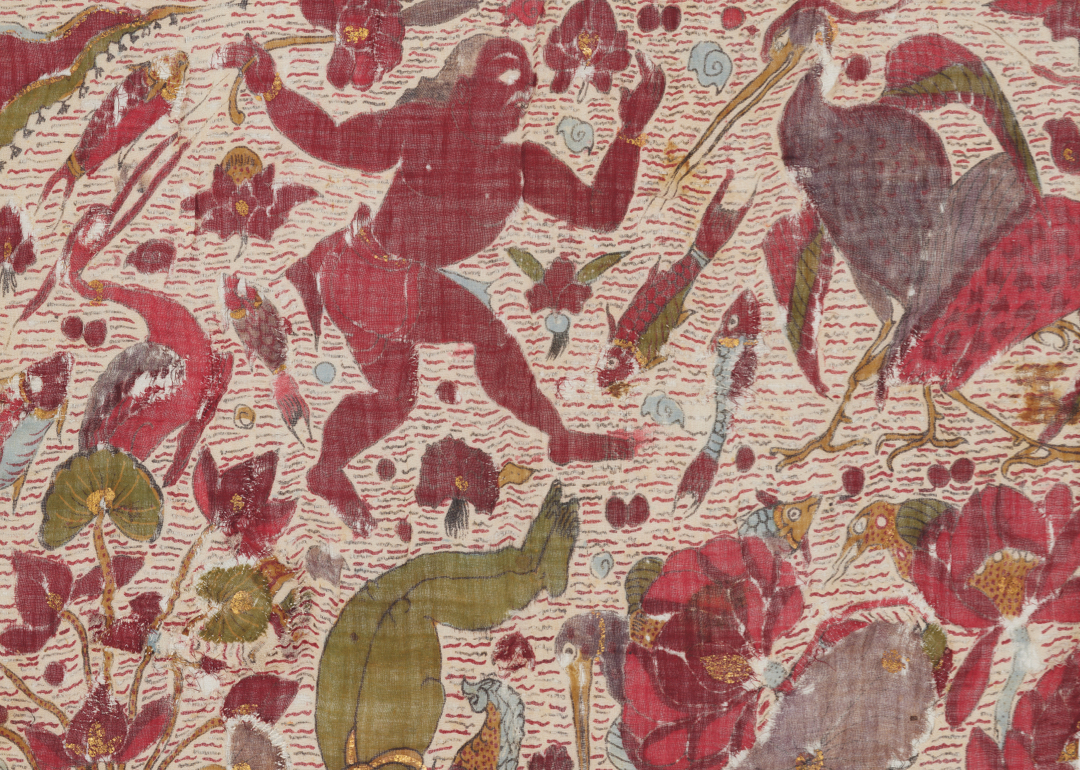Exhibition Program: Figurative Patterns and Narrative Imagery in Indian Textiles

In this virtual talk, Sylvia Houghteling explores the making and meaning of figurative patterns in the history of South Asian textiles. While the majority of cloths traded within and beyond India in the medieval through modern period bore geometric or floral patterns, a large body of textiles exist with scenes of birds and animals, parades and festivals, and private images of devotion.
Examples of textiles featuring these figurative motifs include some of the earliest extant textiles traded from India to Egypt that have block-printed patterns of dancing goddesses and geese marching in a circle. Double-ikat “patola” textiles traded to Indonesia were woven with imagery of monumental ceremonial elephants. Early modern “kalamkari” textiles painted with mordants and dyes depicted battles from the Ramayana and also textiles with scenes of the Persianate courtly culture found in the Deccan region.
This talk studies the technical challenges of weaving, dyeing and embroidering figurative scenes, and engages with the complex conceptual questions about the textile medium that fabrics with figurative patterns bring to the fore. Since these patterned cloths both fulfilled utilitarian needs and yet could also express narrative or cultural meaning, they complicate the traditional art historical distinctions between fine and decorative arts.
About the Exhibition
Vibrant textiles have long been synonymous with Indian culture. Their distinctive abstract, floral and figurative patterns have inspired countless variations. Featuring masterworks from The Textile Museum Collection and the private collection of Karun Thakar, this major exhibition and accompanying publication showcase court weavings, folk embroideries and other fabrics from the eighth through the early 20th centuries. Learn more about the exhibition.
About Sylvia Houghteling
Sylvia Houghteling is an assistant professor in the Department of History of Art at Bryn Mawr College, where she specializes in the visual and material culture of the early modern period. She received a MPhil in history from the University of Cambridge and a doctorate from Yale in 2015. Her research has been supported by the Fulbright-Nehru program, the ACLS, the Metropolitan Museum of Art and the Gulbenkian Museum in Lisbon. Her first book, The Art of Cloth in Mughal India, is forthcoming from Princeton University Press in March 2022.
How to Participate
This program will take place on Zoom. To participate, please register online, and we will email you a link and instructions for joining. Simply follow that link at the time the program starts (12 p.m. EDT / 9 a.m. PDT). When you register, you can also request to receive a reminder email one day before the program with the link included.
About the Series
Virtual and in-person programs explore themes from the exhibition Indian Textiles: 1,000 Years of Art and Design. Browse upcoming programs

